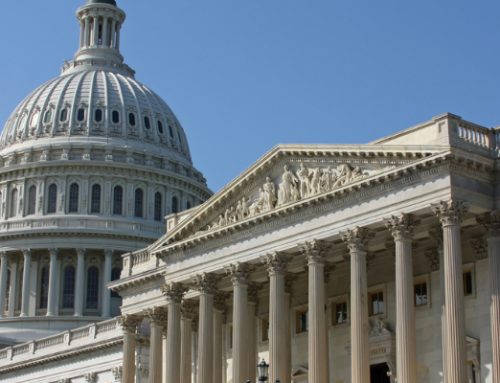1031 exchanges have long been used in real estate to help investors maximize their gains and defer taxes. Since the Tax Cuts and Jobs Act (TJCA) of 2017, the treatment of 1031 exchanges has been more complex, nuanced, and limited according to varying definitions of real property. Now with final regulations, real estate investors can make more informed decisions about which properties qualify.
The final regulations also differ somewhat significantly from proposed regulations in June 2020. Timing of the final regulations also comes with the likelihood of even more tax changes in the coming year.
Historically, investors were free to use personal property in like-kind exchanges until TCJA went into effect in January 2018. But because there are different definitions of real property depending on which section of the Tax Code one looks at, investors have had to carefully examine whether a property fell under the revised rules.
Thus, questions of whether or how to include assets such as machinery, water or air space, permanent or integral components, intangible assets, and more have been at issue since 1031 exchanges became more limited in 2018.
Final Regulations for 1031 Exchanges
The biggest change in the final regulations is clarifying the definition of real property. The IRS and Treasury specifically provided guidance in a few more areas, including:
- Specific definitions of real property and distinct assets,
- Confirmation that state or local law is used to determine how real property is classified
- Treatment of incidental personal property in 1031 exchanges,
- Removal of the “purpose or use test” from the proposed definition, and
Under 1031, real property is defined as land, improvements to land, unsevered natural products of land, and water and airspace superjacent to land. The core approach hasn’t changed, and taxpayers still must adhere to all other requirements of a 1031 transaction.
It is important to note that this definition of real estate applies to 1031 exchanges only and should not be considered an amendment to any other definition in the Tax Code. Final regulations for 1031 exchanges apply for transactions on or after December 2, 2020.
State or Local Law Classifications
State or local law prevails, except in cases of certain intangible assets, such as some permits and licenses required to operate the real property. It was suggested in the proposed regulations to de-emphasize state or local law in favor of a more general guideline at the federal level. For the most part, the final regulations took the approach that if property wasn’t considered real property before TCJA, it shouldn’t be considered real property now. It seems the IRS’s goal here was to more fully capture Congress’s intent regarding continuity of state and local classifications.
Distinct Assets
Distinct assets, like buildings, structures, systems, or machinery, can be considered real property based upon a four-part test:
- Can the asset be sold or acquired as a single unit instead of a component part of a larger asset?
- Can the asset be separated from a larger asset, and if so, what is the cost of separation?
- Is the asset commonly viewed as serving a useful function separate from the larger asset it is a part of?
- Will separating the asset from the larger asset it is part of cause damage or impair functionality to the larger asset?
Further, the final regulation stipulated what’s included in the six main categories of real property, which are:
- Land
~ Inherently Permanent Structures – “Any building or other structure … permanently affixed to real property and will ordinarily remain affixed for an indefinite period of time” qualifies for 1031 purposes
~ Structural Components – A distinct asset that is “a constituent part of, and integrated into, an inherently permanent structure”
- Unsevered Crops
- Certain Intangible Property
- Other
Detailed definitions of each type of distinct asset can be found in Section 1.1031(a)-3 of the final regulations.
Instead, the final regulations “are intended to provide tests under which taxpayers can evaluate the particular facts and circumstances of the property in question to determine with certainty whether a particular property is characterized as real or personal property.”
Incidental Personal Property
To limit complex calculations, the IRS permits a safe harbor for personal property attached to a 1031 transaction. Under the safe harbor, up to 15 percent of the fair market value of the replacement property can be included in the transaction.
“Purpose or Use Test”
The “purpose or use test” in proposed regulations would have required taxpayers to consider how inherently permanent structures – like a gas line, for example – would be used before determining whether to include them as qualified real property. Instead, property that is inherently permanently fixed, whether it’s a gas line, machinery, equipment, or so on, will be treated as real property for the purpose of like-kind exchanges. Structural components are considered to be real property if they are affixed to inherently permanent structures.
What’s Next
Clarification on easements or leaseholds was missing from the final regulations and real estate investors will still need to determine whether a transaction fully or partially qualifies for 1031 on a case-by-case basis.
It is possible that President Biden’s administration will reduce or eliminate the value of 1031 exchanges, too. Though not specifically mentioned by name, it is generally understood that like-kind exchanges are part of Biden’s proposal to eliminate certain tax breaks in the real estate sector. Further, Biden’s proposal to tax capital gains at ordinary rates for taxpayers making $1 million or more could complicate tax planning even further, regardless of what happens with 1031 exchanges.
Real estate investors and owners need to stay alert and consider the impact of potential sales or property exchanges now and into the future. Contact Jennifer French, CPA, Partner and Construction and Real Estate Team Leader, for additional guidance on 1031 exchanges.





